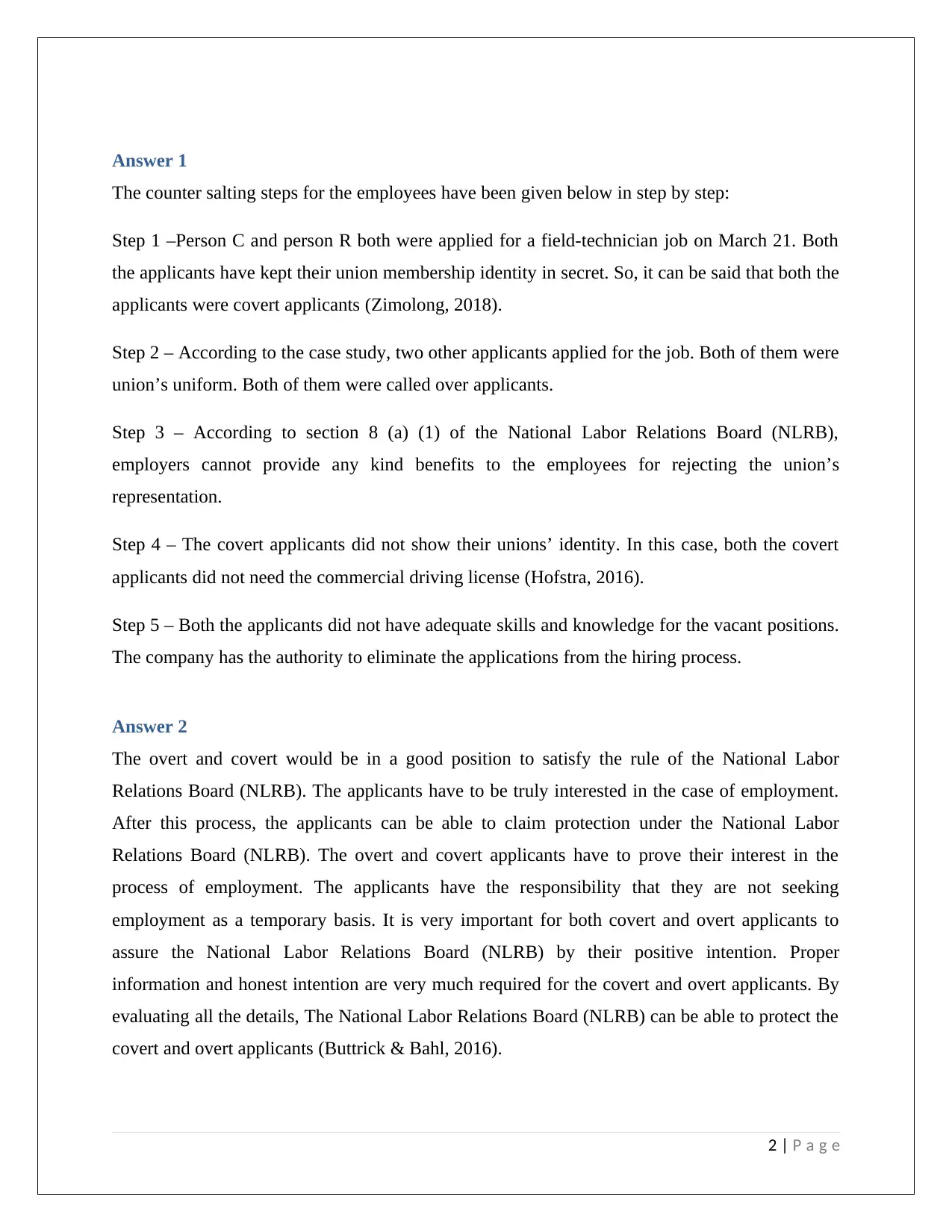Collective Bargaining: Analyzing Employee and Employer Rights
VerifiedAdded on 2023/04/21
|5
|697
|407
Homework Assignment
AI Summary
This homework assignment addresses key aspects of collective bargaining, including union salting, the roles of covert and overt applicants, and the National Labor Relations Board (NLRB) regulations. The assignment analyzes the steps involved in union salting, the responsibilities of applicants, and the appropriate conduct for interviewers. It examines the rights of both employees and employers, particularly concerning union representation and hiring practices. The answers provided delve into the legal and practical considerations of labor relations, referencing relevant sections of the NLRB and highlighting the importance of fair employment practices. The assignment also references the importance of proper information and honest intentions for applicants, and how interviewers should conduct themselves to avoid any charges of unfair labor practices.
1 out of 5











![[object Object]](/_next/static/media/star-bottom.7253800d.svg)